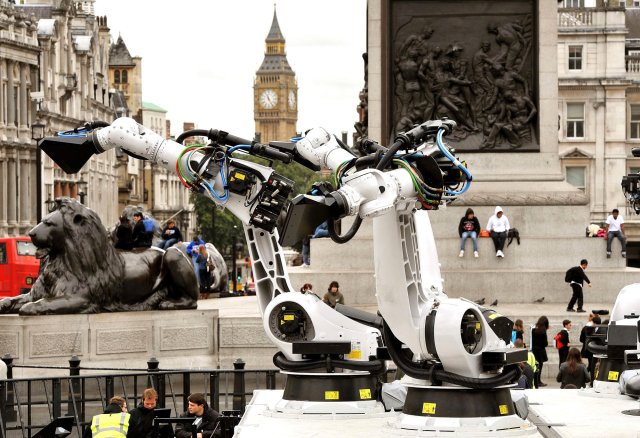Credit: John Stillwell

Something very strange is happening to the world economy. We have entered a new era of ‘positive supply shocks’ in which old assumptions about the relationship between monetary policy, inflation, economic growth and unemployment no longer apply. Short-term factors such as rising oil prices and the nudging up of interest rates will be enough to create an illusion of restored normality over the next year or two. However, not everyone is fooled. Among them is Jeremy Warner of the Daily Telegraph, who distinguishes the signal from the noise:
“…most of the ongoing structural pressures on prices are decidedly disinflationary, and likely to remain so for decades to come.
“The reason? Automation and Artificial Intelligence (AI) – variously referred to as the second machine age or fourth industrial revolution.”
The ‘second machine age’ promises a second dose of disinflationary pressure – the first being the impact of globalisation. Using the UK textile and clothing industry as an example, Warner describes how production has moved to countries with ever cheaper sources of labour:
“The jobs moved first to Hong Kong, then as the former British colony began to lose price competitiveness, to a newly liberalising China. From there they migrated to still lower cost developing economies such as India, Bangladesh and Vietnam.”
The logical next step would be Africa, but Warner suggests that progress in automation is set to disrupt the process of globalisation:
“The robots promise a final leg of the journey to production facilities where there are no, or hardly any, labour costs at all. Already we are seeing real life examples of this market driven end game. Nike, for instance, has managed fully to mechanise production of its top end running shoes. As ever, the purpose is extra margin and profit, but it won’t be long before others catch on and prices fall to match.”
Automation is likely to have an even bigger disinflationary impact than globalisation. For instance, cheap labour doesn’t necessarily stay cheap. Over time, industrialising economies create new opportunities and alternative, better paid, jobs. Thus, if you want to keep your workers, you have to pay them more. Robots, however, make no such demands – and like most technological products, they get cheaper over time.
Robot-based productive capacity is also easier to scale-up. An industry that relies on people can’t get bigger unless it can recruit more people. These might not be available in the local labour market and bringing workers in from elsewhere gets you into complications with things like immigration and housing. Even if new workers are available, they still have to be trained-up to do the job. Additional robots, however, can be ordered from your supplier, pre-loaded with the software you’re already using.
Robots are also unlimited in the overtime they’re willing to do (not that you have pay them any extra, of course). They’re also very accommodating when it comes to relocation.
For all of these reasons, an automated industrial base will be one with an unprecedented ability to match supply to demand.
Warner identifies another reason why automation is set to be a bigger deal than globalisation – the application of Artificial Intelligence:
“The disinflationary effects of globalisation have to date been predominantly concentrated on tradeable goods, leaving the comparatively closed world of domestically focused service industries relatively unaffected. Service sectors have therefore experienced rather higher levels of inflation.
“AI threatens to do to service industry prices what globalisation has done to the price of goods.”
If one counts immigration as part of the process, then globalisation has had a disinflationary impact on the cost of services too. However, because immigrant workers (if working legally) are covered by the same protections as native workers, this impact, though significant, is limited. Robots, on the other hand, are not entitled to a minimum wage or any other rights. So, unlike globalisation, the impact of automation will be limited only by what the technology is capable of – and that is advancing all the time.
Globalisation and automation are often spoken of together – or even interchangeably. Having adapted, more or less, to the former – we might assume that we can muddle our way through the latter.
I wouldn’t count on it.










Join the discussion
Join like minded readers that support our journalism by becoming a paid subscriber
To join the discussion in the comments, become a paid subscriber.
Join like minded readers that support our journalism, read unlimited articles and enjoy other subscriber-only benefits.
Subscribe